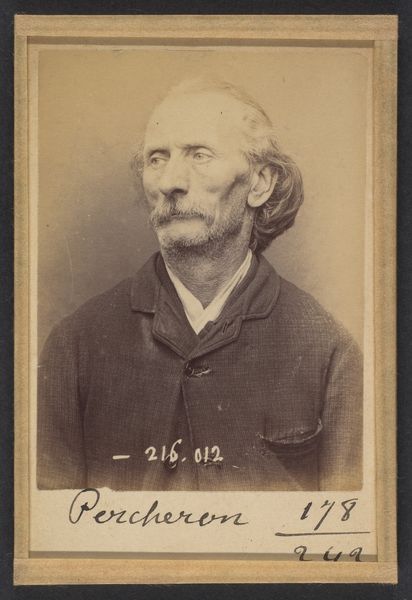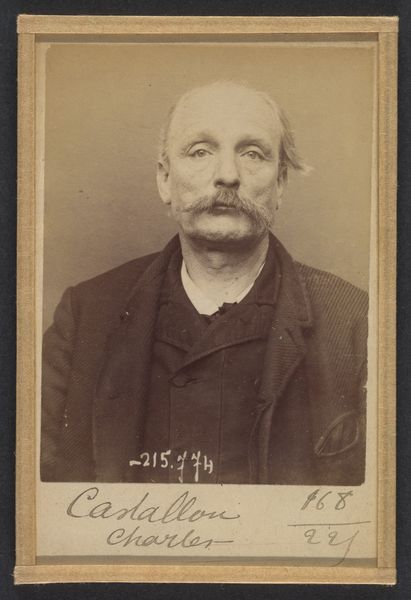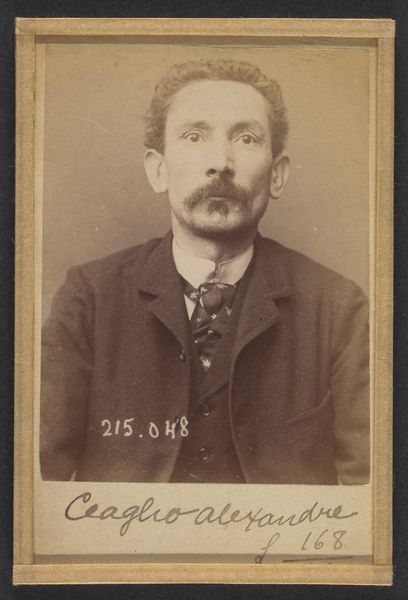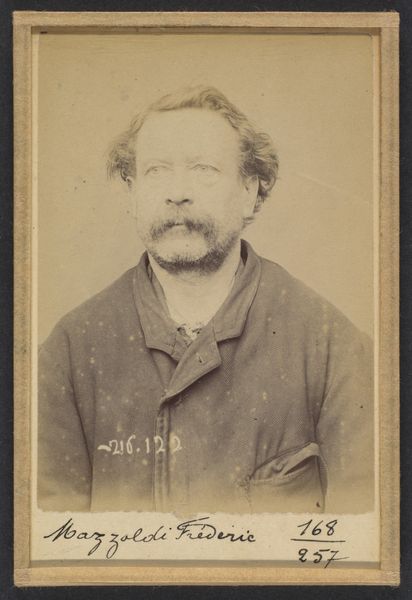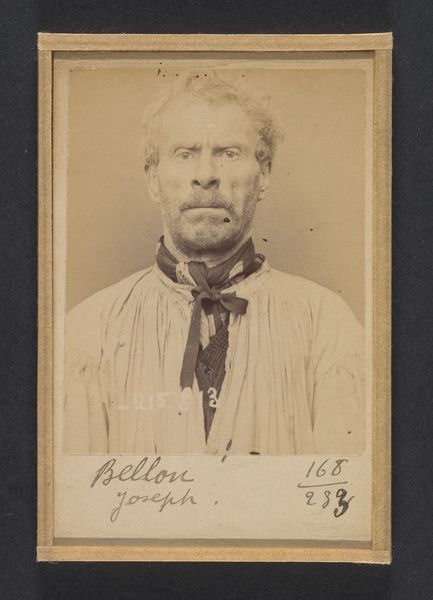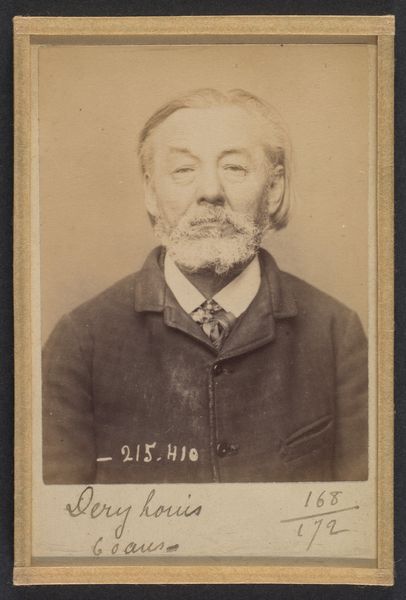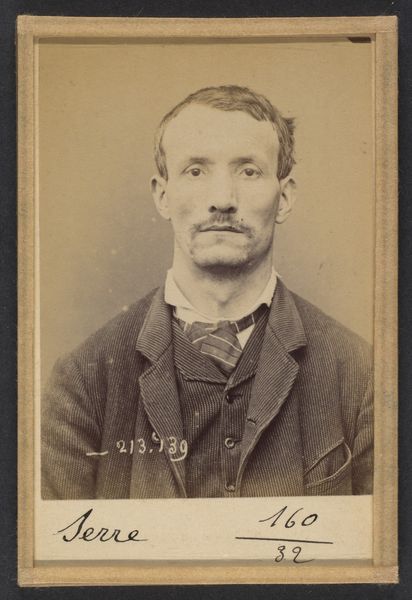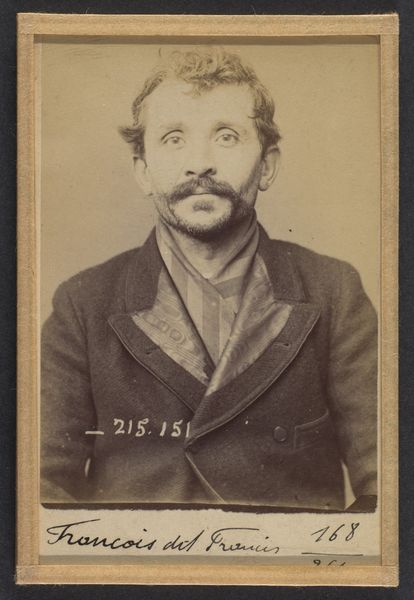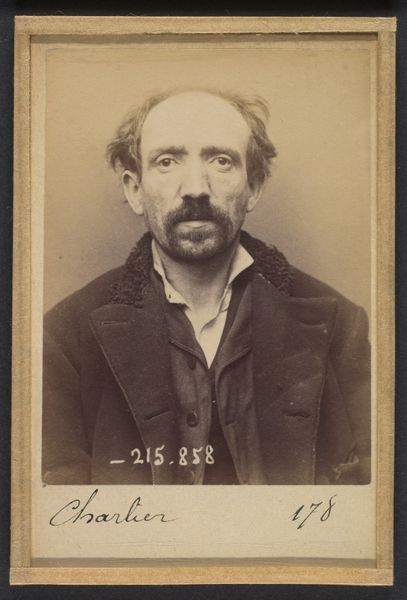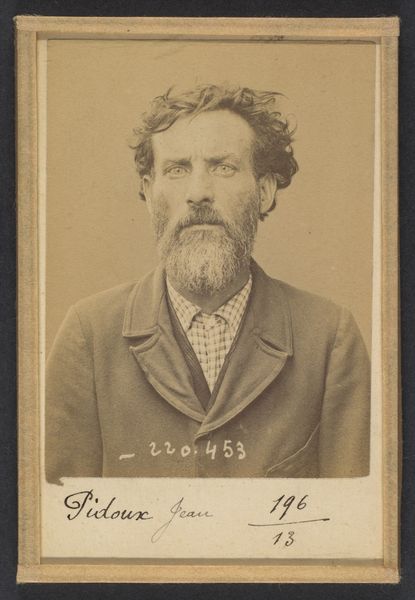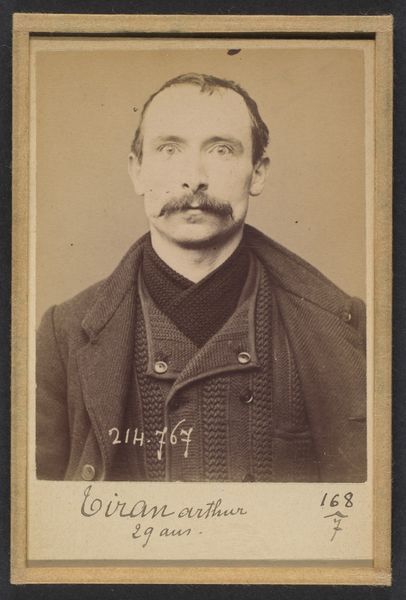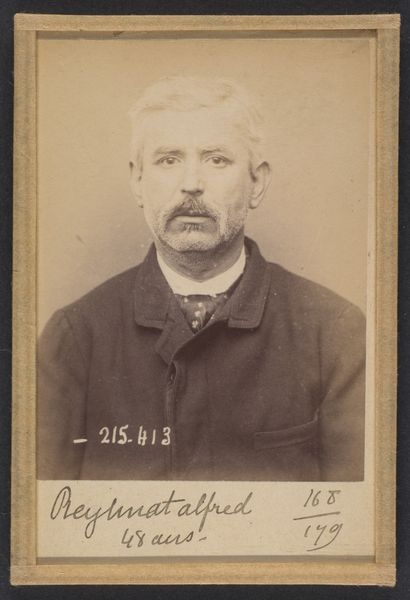
Guelle (ou Gueulle, dit St Denis). 72 ans, né à Beauvais (Oise). Matelassier. Anarchiste. 7/3/94. 1894
0:00
0:00
daguerreotype, photography
#
portrait
#
daguerreotype
#
photography
#
academic-art
Dimensions: 10.5 x 7 x 0.5 cm (4 1/8 x 2 3/4 x 3/16 in.) each
Copyright: Public Domain
Editor: Here we have "Guelle (ou Gueulle, dit St Denis). 72 ans, né à Beauvais (Oise). Matelassier. Anarchiste. 7/3/94" – a daguerreotype photograph by Alphonse Bertillon, dating from 1894. It’s quite striking… austere almost. The subject’s direct gaze and the clinical detail… it’s quite intense. What’s your take on this, considering its historical moment? Curator: The intensity you perceive is precisely what makes this image so compelling. This photograph, part of Bertillon’s mugshot archive, speaks volumes about the intersection of power, identity, and the burgeoning field of criminology in late 19th-century France. Note the details – "Anarchist," the stark enumeration of his identity and profession. What does that tell us? Editor: It feels like an attempt to categorize and control him, stripping him of his individuality. Almost dehumanizing, maybe? Curator: Exactly. This is about the state asserting its authority. The photographic process itself becomes a tool of surveillance, creating a visual record meant to contain those deemed "deviant." Anarchism was a huge threat to the status quo then. Think about the socio-political context – anxieties around class, immigration, and the rise of radical political ideologies. How does knowing this man was labeled an “Anarchist” affect how you see the portrait? Does it soften your reaction, or harden it? Editor: It makes me think about the potential injustices of the system. Was he really a threat, or just someone who dissented? It's a reminder that labels can be incredibly loaded and often misapplied. I guess it’s naive to assume this image is objective, as photography has such a strong relationship with power. Curator: Precisely. By questioning the image and situating it within the larger historical and political framework, we challenge the assumed neutrality of the photographic medium itself and hopefully better understand its impact then, and even now. Editor: That’s powerful. I’ll definitely look at historical photographs differently from now on. Curator: That's wonderful to hear, I'm so glad this was an impactful experience for you.
Comments
No comments
Be the first to comment and join the conversation on the ultimate creative platform.
